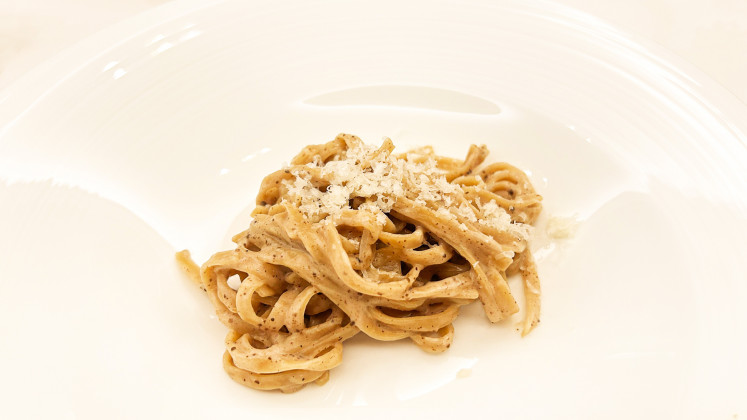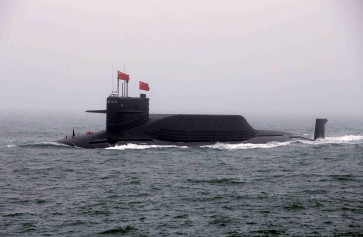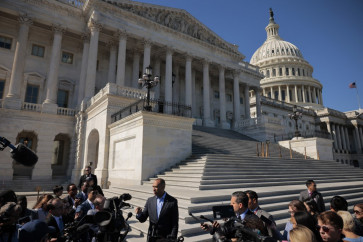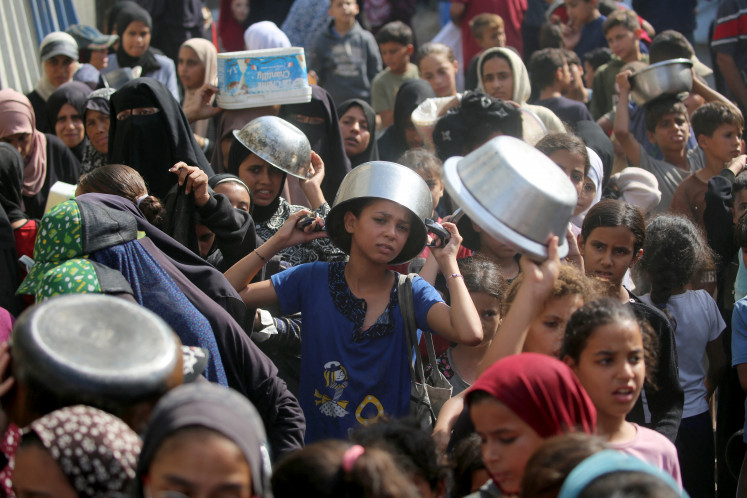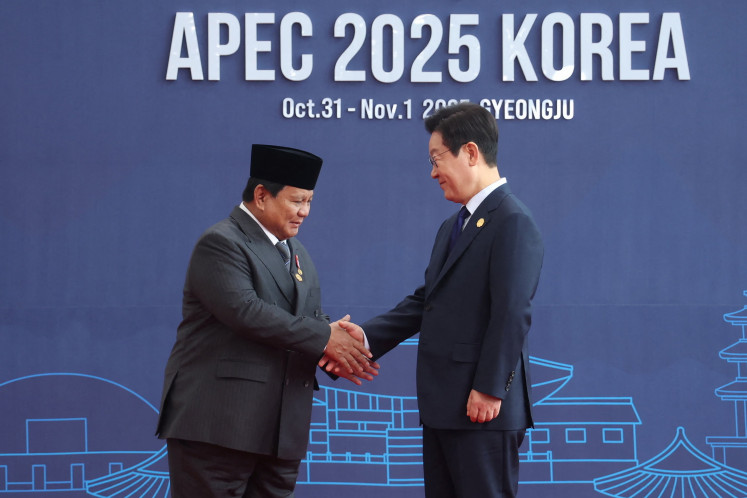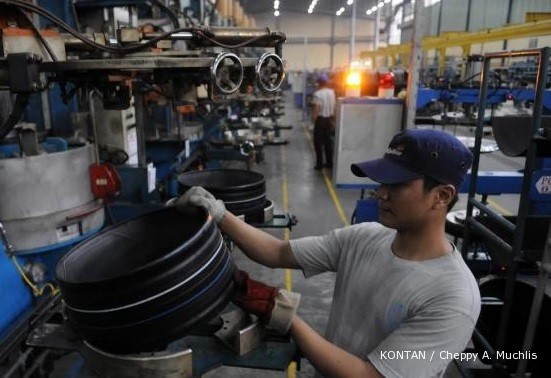Popular Reads
Top Results
Can't find what you're looking for?
View all search resultsPopular Reads
Top Results
Can't find what you're looking for?
View all search resultsDemystifying 'kerokan' a Surakarta palace healing tradition
Tradition: The back of the body is where impure blood and poisons gather and it is believed kerokan can help removed the blood impurities and toxic substances
Change text size
Gift Premium Articles
to Anyone
T
span class="caption" style="width: 262px;">Tradition: The back of the body is where impure blood and poisons gather and it is believed kerokan can help removed the blood impurities and toxic substances.
Kerokan' or scraping the skin with oil and a coin 'is a traditional Javanese healing therapy.
Some, however, say the therapy might be harmful, causing skin to thin and opening up pores and blood vessels.
Dewi Lestari, a student at Kusuma Husada Health College in Surakarta (locally known as Solo), Central Java, says she is not sure about it, even though she had kerokan treatment whenever she felt unwell.
'But after I read several books and articles describing this method as hazardous to health, I began to doubt it,' she said.
Others, however, remain believers, albeit in a limited sense, finding the therapy useful when suffering from colds or fevers.
To address skeptics, Sjafiq PA, a physician in Surakarta, has been looking into the practice's health benefits.
He claimed scraping can heal various illnesses without drugs. 'Kerokan is safe and effective, as long as it's done with the right technique,' he said.
There is some good news: Lab tests and physical examinations conducted by researchers from the pathology and anatomy labs of Sebelas Maret University (UNS) in Surakarta showed that there was no skin damage or broken blood vessels during scraping.
Alternative: Eastern drugs and treatments originate in natural products safe for the human body and, most importantly, lack side effects.
'Blood vessels are just dilating, which causes smooth blood flow and increases oxygen supply. The epidermis also comes off, which is also the case in luluran,' he explained, referring to traditional rice-powder rubbing.
The study also indicated there were elevated endorphin levels in patients, who reported feeling pleasure, freshness and enthusiasm, while prostaglandin levels, which stimulates uterine contractions, lowers blood pressure and regulates gastric juice secretions and body temperature.
'Reduced prostaglandin relieves muscle pain,' Sjafiq said.
Not many have learned to administer the therapy correctly, he says.
'Scraping the skin can be dangerous if improperly done. The illness being treated may even worsen.'
Unlike most other physicians, Sjafiq recommends that his patients to combine Western therapy with traditional healing for maximum impact.
'Kerokan has many benefits, so I think traditional healing can go along with a 'modern' cure,' he said.
Sjafiq said there was philosophical difference between traditional healing from Asian and Western medicine. 'Easterners are convinced that disorders come from imbalances occurring in nature or the body, so they're more inclined to disease prevention, by maintaining natural balances rather than cure. Westerners attribute illnesses to certain causes, so they administer drugs to deal with the sources,' he said.
'Eastern drugs originate in natural products safe for the human body and, most importantly, without side effects,' he says, which makes the cures ideal for those with acute or chronic ailments.
Another advantage is that Eastern practitioners heal people with heart and do their job with greater wisdom,' Sjafiq said. 'Western therapy is in my view not so wise in the sense of lacking the use of heart. They only use their heads and their hands.'
Indonesia has several safe and effective traditional healing methods, according to Sayfiq. 'We have kerokan, jamu [herbal medicine], massage and much more. What a pity we haven't developed them all yet.
He was excited about an invitation from the Traditional Treatment Forum to expound on the medical and health benefits of kerokan in Surakarta. Around 100 people joined his recent training session at the Kasunanan Surakarta Palace.
Historically, kerokan therapy has been part of the cultural heritage of the Surakarta sultanate and has been practiced for centuries in Java.
Kanjeng Gusti Pangeran Haryo Puger from the palace that the techniques behind the therapy and crafting the special oil used has been handed down for generations in the royal family.
'The preservation of kerokan is part of the conservation of our ancestors' cultural heritage,' he said.
Kerokan therapy is also available in Cambodia, China, Vietnam and even France.
Two steps: Sjafiq recommends that his patients to combine Western therapy with traditional healing for maximum impact.
Practitioners in the Surakarta palace used to use buffalo horns, ceramic spoons, metal coins and jade stones to scrape.
'There are also various ingredients for the kerokan oil concoction. The palace is trying to produce such traditional healing oil for preservation and public consumption,' added Puger.
The kerokan technique based on the palace tradition involves smearing oil on the skin, followed by a scraping with a coin held at a 30 degree angle, he says.
Scraping cannot be done too strong or too fast, with a maximum of once every two seconds.
Syafiq's research indicated kerokan therapy is good for a host of ailments.
While applying kerokan therapy to the neck, throat and shoulders can heal a cough, breathing problems, fevers, headaches, toothaches and insomnia, for example, applying it to the lower back can relieve abdominal and lower-back complaints.
'Some of them are digestive disorders, such as food poisoning and gynecological disorders,' he says.
Practitioners of the traditional therapy don't recommend that coins be applies to the face, in case of hemorrhage or for pregnant women. After scraping, patients are advised to rest and drink a lot of water to help detoxification.
' Photos by Ade Rizal



